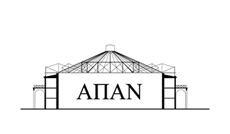Heather, Goths and Romans (1994)
[Bibliography]
Peter J. Heather, Goths and Romans 332-489, series Oxford Historical Monographs (Oxford University Press, 2nd ed., New York 1994)
First edition
Contents: Figures p. xii. Abbreviations p. xiii. Part I. Jordanes and Gothic History: 1. Reconstructing Gothic History pp. 3-33. 2. The Historical Value of Jordanes’ Getica pp. 34-67. Part II. The Formation of the Visigoths: Goths and Romans pp. 376-418: Introduction to Part II pp. 71-83. 3. Goths and Romans before the Huns pp. 84-121. 4. The Danube Crossing and Gothic War pp. 122- 156. 5. The Peace of 382 and After pp.157-192. 6. Alaric and the Move to Gaul pp. 193-224. Part III. The Formation of the Ostrogoths: Goths in the Balkans, pp. 450-489. Introduction to Part III pp. 227-239. 7. Pannonians and Thracians: The Origins of Conflict, 453-473 pp. 240- 271. 8. Zeno and the Goths, 474-479 pp. 272-293. 9. Solving the Gothic Problem pp. 294-308. Conclusion pp. 309-330. Appendices: A. Gothic Tribal Names pp. 331-333. B. Goths in Pannonia, c.380-408 pp. 334-344. Bibliography pp. 345-360. Index pp. 361-378. Total pages i-xvi and 1-378.

